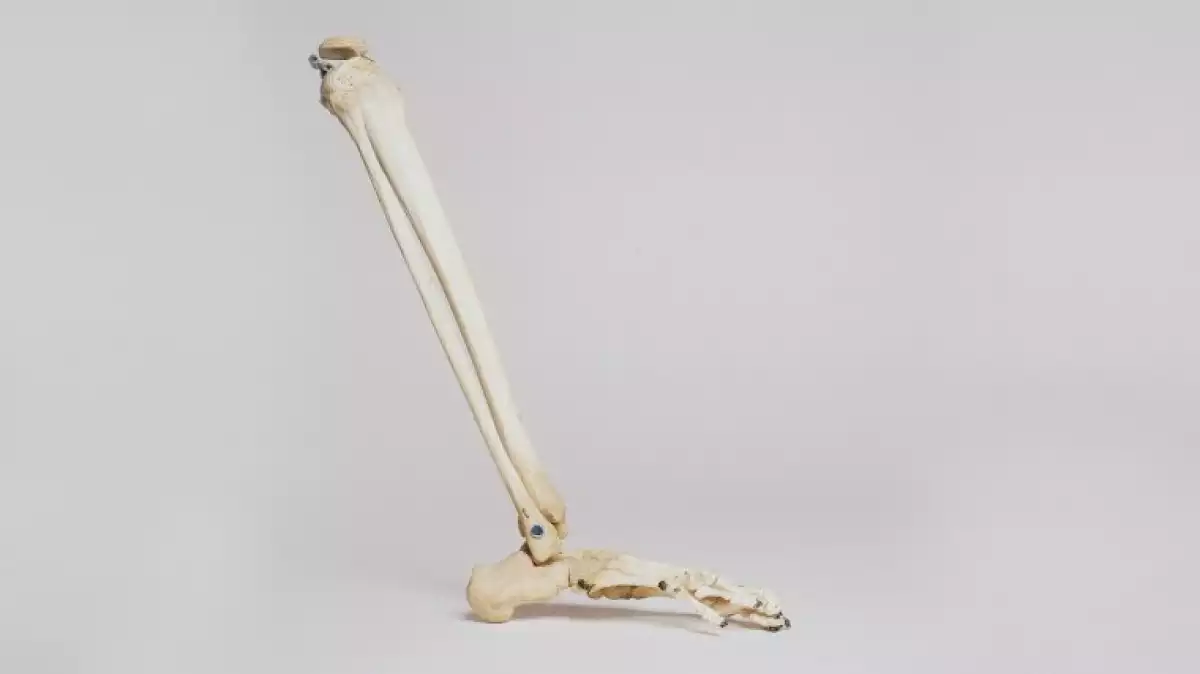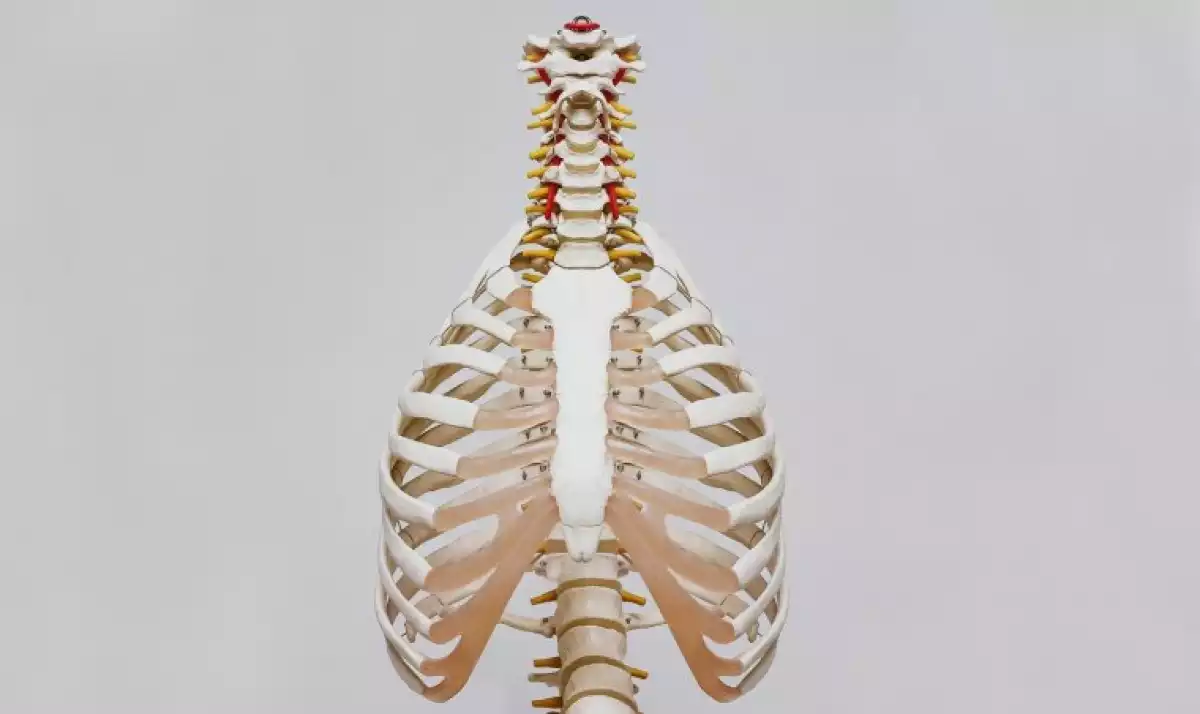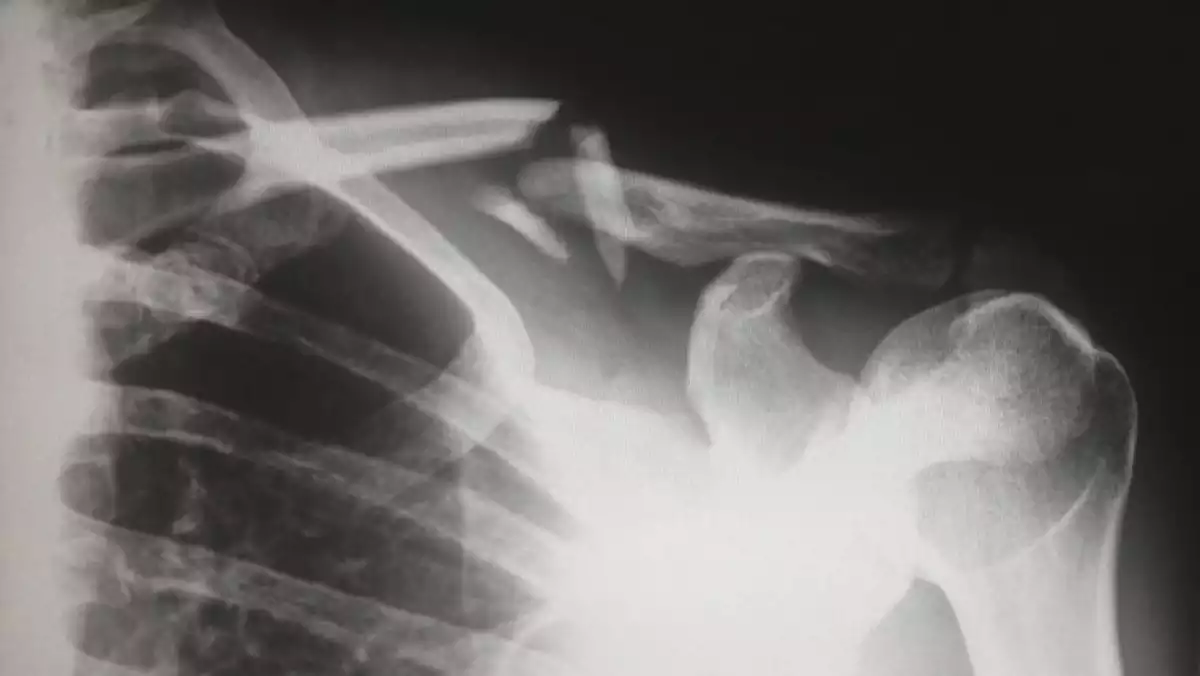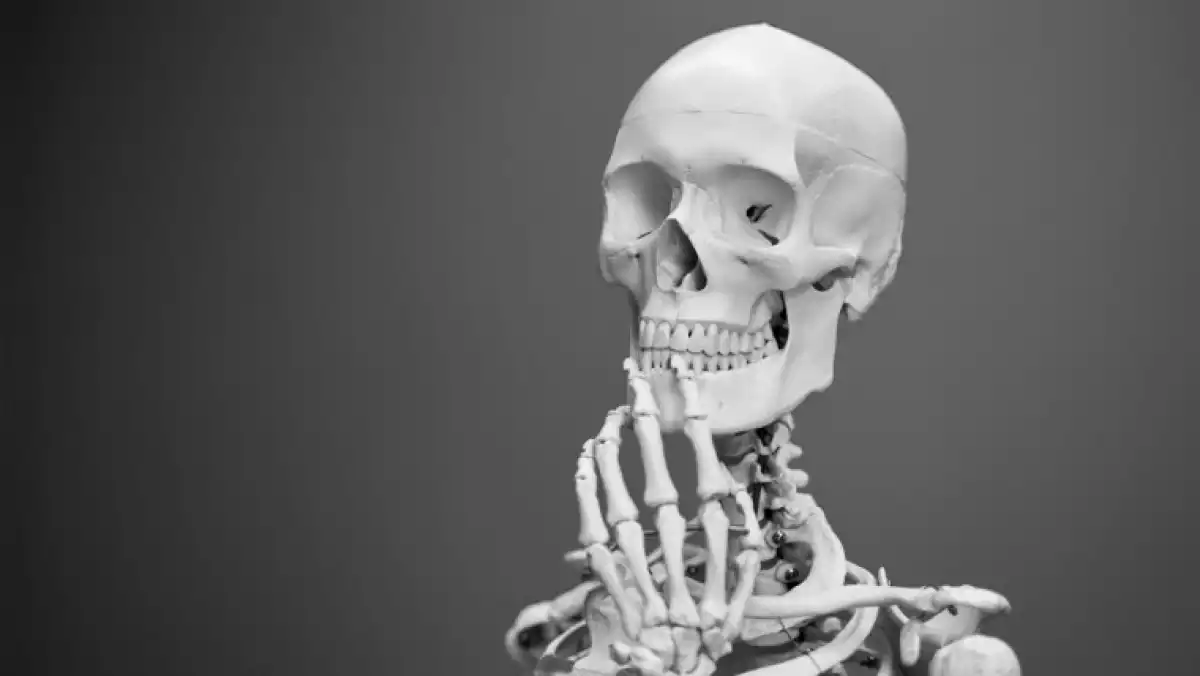Bones are the hardest part inside of vertebrate animals' bodies, among which we can find humans. All together they form the skeletal system or skeleton of all the parts of the human body: feet, hands, wrists, face, arms, legs, ribs, hips, etc.
In this article, we are going to list the bones of the human skeleton, and we will also explain how many bones we have and what types of them exist. At the end of the article, we will also mention some of the most common bone diseases and how we can favor the excellent development of these bone structures.
How many bones are in the human body?
Apart from having a circulatory system, a muscular system, and a reproductive system (among others), the human body has a skeletal system. The latter consists of all bones and joints.
The skeletal system and its components are in charge of holding the body together, that is, support its weight, give it balance and allow it to move. On the other hand, it also protects the organs inside it.
To achieve this, both in humans and animals, the development of a large number of bone structures are necessary. How many bones are in the human body? An adult skeleton has 206 bones.
Each one of them connects with the rest, or with the cartilage, thanks to other anatomic structures called joints. As they are connections between bones and between bones and cartilages, joints allow the movement and elasticity of the skeletal system.
Types of bones according to their shape
Bones can have very different shapes, as well as lengths. In general, we can distinguish between three different kinds of bones according to their morphology (their shape): long bones, flat bones, and short bones.
An example of a long bone is the humerus, which is located in the arms and it is the longest bone of this part of the human body. On the other hand, an example of a flat bone is the scapula (or shoulder blade), which has a triangular shape and we can find it in the thorax, specifically between ribs number 2 and 7.
And an example of short bones are the vertebrae, which are the 26 that form the spine in an adult's body.
As we mentioned before, the human skeleton has more than 200 bones distributed in the head, the limbs, and the trunk. In the following lines, we will list the 34 main bones in the human body. We will also tell you about where we can find them and their functions.
Foot bones
Together with different joints, the bones of the foot have the primary function of giving flexibility and mobility to this part of the body. In humans, there are both long and short type bones. Let's see what some of them are, including the bones of the toes.
1. Tarsal bones
Between the leg bones and those of the toes, there is a group of bones, specifically in the part that we know as "tarsus." This is why these bones are called "tarsal bones."
They are seven bones: talus, calcaneus, cuboid, navicular and cuneiform (there are three of the latter)
2. Metatarsal bones
As their name suggests, the metatarsal bones are located at the top of the tarsus. They are five long bones named according to their specific position: first metatarsal, second metatarsal, third metatarsal, fourth metatarsal, and fifth metatarsal.
3. Phalanges
We can find them both in the hands and the feet, as they form the fingers in both parts. They are long bones, and there are three in each of the fingers: proximal, intermediate, and distal phalanges. In the thumbs and big toes, there are only two.
Hand bones (including wrist bones)
As the foot bones, the hand bones connect with tissues and joints to allow this part of our body to move. There are long, short and flat bones and they are located between the wrist and the fingers.
4. Carpal bones
The set of bones that make up the wrist is called the carpus. They are eight bones located in two rows. Towards the area of the forearm, there is the scaphoid bone, the lunate bone, the triquetral bone, and the pisiform bone.
The bones located towards the palm are the trapezium bone, the trapezoid bone, the capitate bone, and the hamate bone. These wrist bones all together are in charge of allowing the hand to move.
5. Metatarsal bones
The metatarsal bones get their name from where they are located (they are in the metacarpus, part following the wrist). There is one in each finger, so there are a total of five. They have a head (epiphysis), a trunk or middle part (diaphysis) and the union of these two is called metaphysis.
Just like the shape of our fingers, the metacarpals are thin and long bones.
6. Phalanges
These are long bones located in the fingers. In four of the five fingers, the phalanges are made up of a proximal, an intermediate, and a distal part. In the phalanges of the thumbs, there is only one proximal and one distal part.
Leg bones
The leg is where we find the strongest bones of the human skeleton. This is because they are in charge of supporting the rest of the skeleton and make it move. They are usually divided into thigh bones, knee bones or shin bones. Let's have a look at some of them.
7. Femur or thigh bone
In the thigh, there is a bone called femur, which is known as the strongest bone of the skeletal system. It is also the longest and the biggest.
8. Patella or kneecap
We can find the patella in the knee area, specifically in the rear part. It has a triangular shape, but with rounded corners. It is a flat bone.
9. Fibula or calf bone
In the inferior part of the leg, popularly known as "shin" or "calf," we find the fibula. It is a long bone whose shape is similar to a fastener. It has three facets, three corners, a head at the top end and a lateral malleolus at the bottom end.
10. Tibia or shinbone
The tibia is one of the most famous bones in the human body. It is long and works together with the kneecap to move the knee. It also shares a joint with the fibula, specifically in the ankle area.
Therefore, its main function is to connect the bones of the knees with the bones of the ankles. It is among the strongest of the leg bones.

Arm bones
The arm bones are generally long. We have bones from the shoulder to the forearm and are in charge of the arm movements as well as to help the flexion of the wrist and hand bones.
11. Humerus
The humerus is a long-type bone, and it is considered the longest bone in the arm. We can find it in the above area of the arms (from the shoulder to the beginning of the forearm).
The head of the humerus is the one that forms the shoulder's joint when it connects with the "glenoid cavity." So it is in charge of the movement of this part of the arm.
It has three main nerves: axillary, radial, and ulnar. The latter is the one that reacts causing a tickling or prickling feeling with pain when we hit our elbow on something.
12. Ulna
The ulna is also a long-type bone, that we can find in the forearm. It connects with the humerus and the radius, and it has three facets: medial, anterior, and posterior facet.
13. Radius
This long bone has three facets: facies anterior, posterior and lateral, each of which is anterior, posterior and external. Among its main functions is to give mobility to the arm and facilitate the activation of the thumb. This is due to the muscles that are inserted in the radius.
Thorax bones (including the ribs)
In the thorax, many bones are in charge of protecting the vital organs and helping support the muscles and bones of the head. The essential thorax bones are the ribs, although the vertebrae, clavicle, sternum, and the scapula are also important.
14. Scapula
The scapula is another popular bone of the human body. It is located in the superior part of the thorax, which connects it to the arm. It is situated precisely between ribs number 7 and 2. It is a flat bone.
15. Sternum
The sternum is a bone in the upper part of the thorax. Its main function is to protect the heart and the lungs. The different segments of the sternum are called sternebra. These are connected to the ribs and the clavicles, depending on their position.
16. Clavicle
The clavicle is also on the upper part of the thorax. It is a long bone that is under the neck, and we can feel with our hands because it leans outwards.
It is a flat bone that has a similar shape as an S. It consists of muscles and ligaments distributed on two facets (upper and lower), two edges (anterior and posterior) and two ends (acromial and sternal).
17. Ribs
The ribs are in the middle part of the thorax, and they are in charge of forming the thoracic cavity where we can find the heart and the lungs. For the same reason, the ribs serve as a protective barrier for these vital organs, allowing at the same time pumping and expansion.
Human beings have 24 ribs, distributed on the right side and on the left side (there are 12 on each side). From number 1 to 7 they are called "true ribs," from 8 to 10 they are known as "false ribs," and the last two (11 and 12) are also called "floating ribs."
18. Spine (vertebrae)
The set of bones throughout the thorax (from the head to the pelvis). Its main function is to hold the bones in the head and protect the spinal cord, which makes them the support and balance of all the body.
Due to its extensive length, the spine is made up of 5 regions with different bones. Their names correspond to where they are: cervical region (with 7 cervical bones), thoracic region (with 12 thoracic bones), lumbar region (with 5 vertebrae), sacral region (with 5 sacral bones) and finally the coccyx (with 4 vertebrae or coxal bones).

Hip bones (coxal or pelvic bones)
Specifically, in our hip, we find some bone structures called coxal bones. In addition to supporting the rest of the thorax, they perform other specific functions.
19. Coxal
The pelvis is a bone and muscular cavity that is mainly composed of a bone called coxal, which means "hip" in Latin. This is a flat-type bone that shapes both the pelvis and the hip joints. It is, therefore, a fundamental bone during labor.
It is composed of different bones: ilium, ischium, pubis, iliac crest, and pubic symphysis.
Skull bones
The main bone in the head is the skull, which is a rigid bone box where the brain is located. It is composed in turn by different structures that we will see next, being all of them flat-type bones.
Also, the facial bones are part of the set of bones of the head. In fact, they are also considered bones of the skull, which we will explain in the next section.
20. Temporal cavity
The temporal cavity is each of the two depressions that form the skull. More than a specific bone, it is the part of the skull where the eyes are located and also where the muscles that move the mandible are.
21. Frontal
The frontal bone is the one in the upper part of the skull, occupying mostly all the forehead zone. It divides in two faces, an endocranial and an exocranial. It also has a vertical region called the "frontal scale" and a horizontal area that shapes the base of the skull.
22. Parietal
The parietal bone is also in the upper part of the skull, but behind the frontal bone and towards the sides. For the same reason, it has a lateral side, called exocranial surface. And it also has an endocranial surface that we can find right in the middle of the skull.
23. Occipital
The occipital bone is in the lower part of the skull, under the parietal bone. The occipital bone also has an exocranial or posteroinferior surface and an endocranial or anterosuperior one. Among other things, it is in charge of protecting the medulla oblongata and part of the cerebellum.
24. Ethmoid
The ethmoid bone is a short-type bone formed by different cavities. It is in charge of originating the nasal cavity and the orbit, which holds both the nose and the eyes.
25. Sphenoid
The sphenoid bone is the bone that holds the other bones that make up the face. It is found in an area inside the skull and is made up of two main facets (upper and lower). In addition to supporting the muscles of the face, the sphenoid allows blood to reach the brain.
Facial bones
We have a lot of bones in our face, which include the teeth, the nostrils, the orbits, the lacrimal, among many others. All together they make up our face, and when connected to different tissues and muscles, they allow it some mobility and flexibility both for eating and for facial gestures, among other things.
26. Nasal
This is a short type of bone that forms the bridge of the nose. It connects with the frontal bone in the skull, with the upper jaw or maxilla and with the nasal cartilage. One of its facets is part of the nasal septum, and together, they make our nose have its characteristic shape.
27. Lacrimal
The lacrimal bone is a small cavity that is in charge of collecting the tears and taking them to the nasal cavity. It also connects to the nostrils and the orbicular muscle of the eyelids.
28. Zygomatic arch
The zygomatic arch is a part of the skull that makes up the human's face. It derives from the temporal bone and connects both to the orbital cavity and the beginning of the jaw. It serves as a connection point between these parts.
29. Mandible
The mandible is a flat-type bone in the lower part of the face, also going through the posterior part, being the one that stands out the most in the human face. It is also known as the lower jaw, and the 10 permanent teeth in the human body come out of it.
30. Condyle
The condyle is a round-shaped structure found in different bones. In the face, it is located in the mandible, while in the lower extremities it is found in the femur. It helps to achieve flexion and extension of the joints it forms.
31. Concha
The concha is a bone of a spongy texture that we can find in the nasal cavities. Human beings have three conchae, and they are in charge of regulating the temperature of the air that goes in the lungs. They do so by generating necessary nasal mucous.
32. Maxilla
The maxilla is a short-type bone. It is also known as the upper jaw, and 16 permanent teeth are originated from it. It also helps to form the palate, and it connects with the nasal bone and the lacrimal bone.
33. Palatine
It is a short-type bone found on the inner-back of the face. It connects to several muscles and bones, fulfilling two main functions: to allow vocalization and to ensure the development of the nostrils.
34. Ossicles
The ossicles are the bones in the ear; that is why they are also called auditory ossicles. There are three in humans: malleus or hammer, incus or anvil, and stapes or stirrup, and they are in charge of making it easier for sound to reach from the movement of the eardrum to the inner ear.

Most common bone diseases
As it happens with the rest of the organs in the human body, bones can also develop some diseases.
Among the main causes of bone diseases, we can find genetic predisposition, nutritional or vitamin deficiency, hormonal disorder or the side effects of the abuse of different substances (including some medicines).
Many bone diseases are also caused externally by traumas, this is, by accidents, fractures, that make the bone wear out or even break.
Depending on the specific bone that has been injured, the diseases are given different names as well as the treatments.
Bones can also develop internal diseases by a reduction of the bone density, as is the case of osteoporosis. This internal weakening can increase the possibilities of having external fractures and injuries.
Bones can develop tumors and different types of cancer, among which we can find the osteosarcoma (the most common malignant tumors) Bone cancer can be caused by the bones or due to metastasis.
Nutrition and vitamins for bones
On the other hand, like with the rest of the organism, the growth of the bones needs enough proteins and vitamins. What are the best vitamins for bones?
Vitamin A and D are especially important as they are the ones that are related to the development of these bone structures from the early stages of human growth.
It is also essential to ensure the proper functioning of endocrine glands such as the pituitary and the thyroid, and also the consumption of adequate doses of minerals such as calcium and phosphorus.
What's good for bone pain?
Many of the bone diseases that we have described before have as main symptoms musculoskeletal pain, this is, bone pain. It is mainly present in osteoporosis, but also in arthritis or arthrosis, which is joint pain. Depending on what type of pain is present (intense or mild, spontaneous or recurrent), different remedies may be used.
Some treatments may also be recommended depending on the cause. In general, analgesic drugs such as acetaminophen or non-steroidal anti-inflammatory drugs are used, although opiates are also used in the case of severe or chronic pain.
- This article about "The Skeleton System" was originally published in Spanish in Viviendo La Salud
References
Thibodeau, G. y Patton, K. (2007). Estructura y función del cuerpo humano. Elsevier: Madrid, España.
Vincent, P. (1981). El cuerpo humano. Anatomia, fisiologia, biologia, higiene. Editorial reverté, s.a: Barcelona, España.
